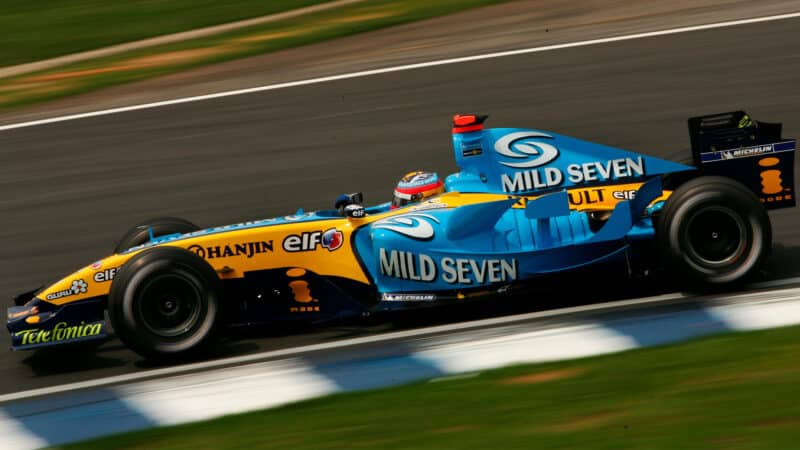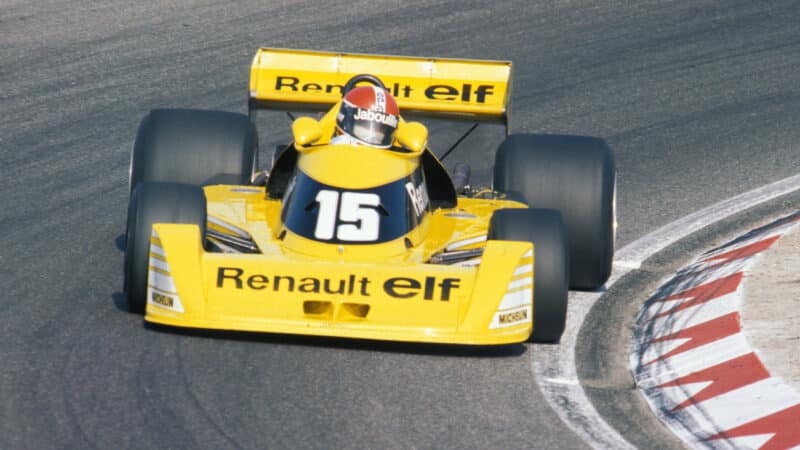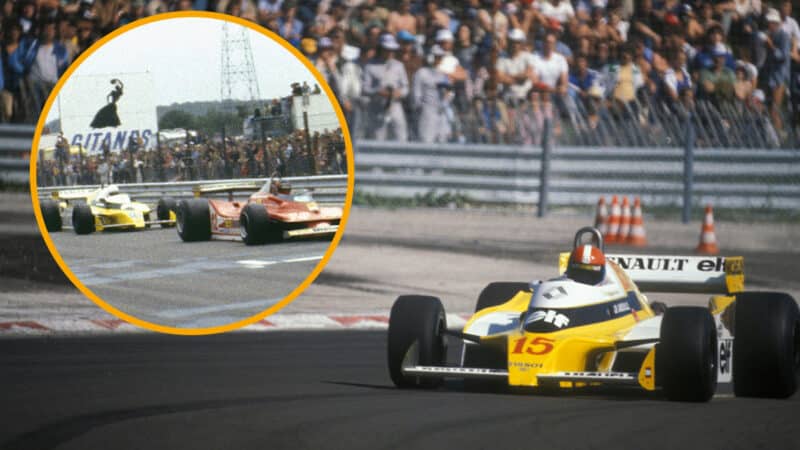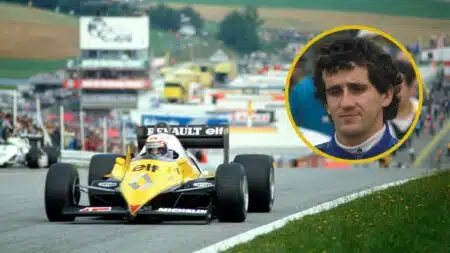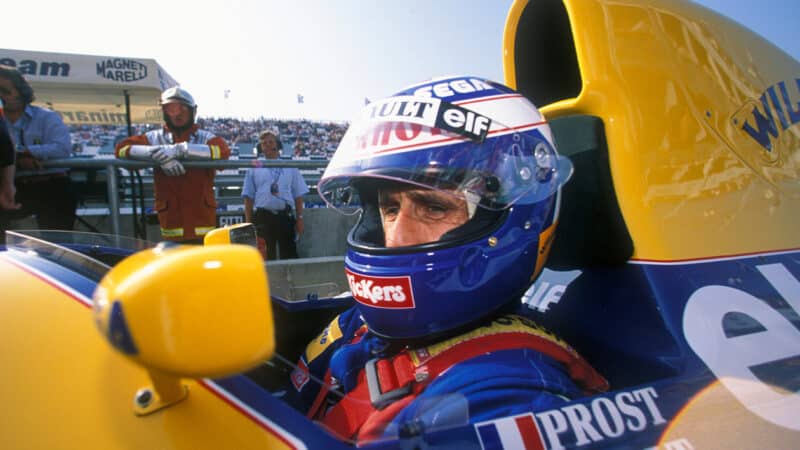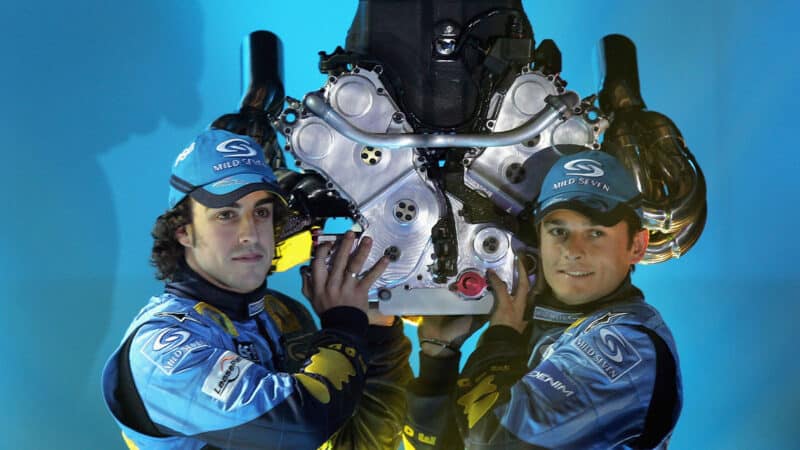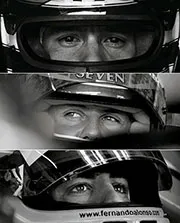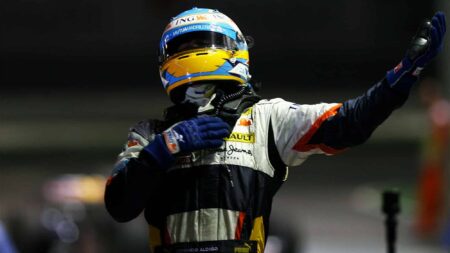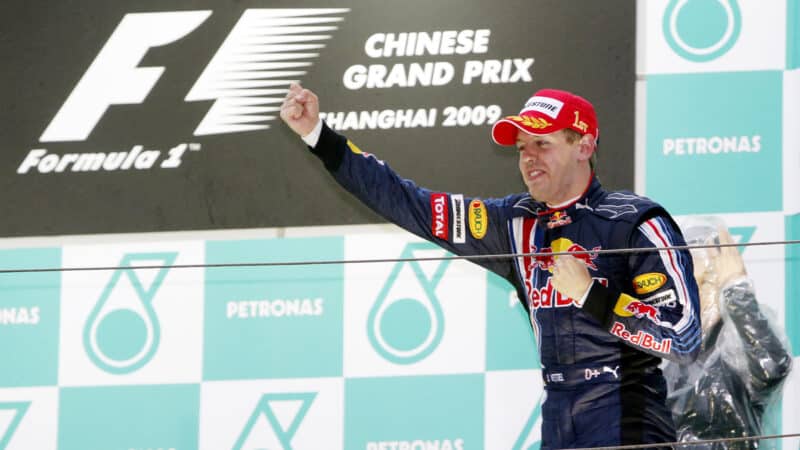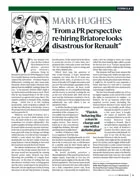The Frenchman won seven races across three years, and was in a commanding position during the run-in of the 1983 season. With four races left he had a strong 14-point lead over Brabham BMW’s Nelson Piquet – Renault even went so far as to put up billboards in France congratulating “our champion” Prost.
However, the team was caught out by its conservatism. At first slow to adapt fuel pitstops when Brabham quickly proved them a strategically viable way to win a race, management also instructed the team to freeze development of its engine.
Piquet went on a charge while BMW kept developing its power unit. Two wins plus a third was enough to snatch the title from Prost and Renault by two points.
“It wasn’t Prost who lost the championship, it was Renault who threw it away,” commented a pithy Piquet. Prost, who had also fallen out with Larrousse, criticised the car in the wake of the final race at Kyalami and was promptly fired.
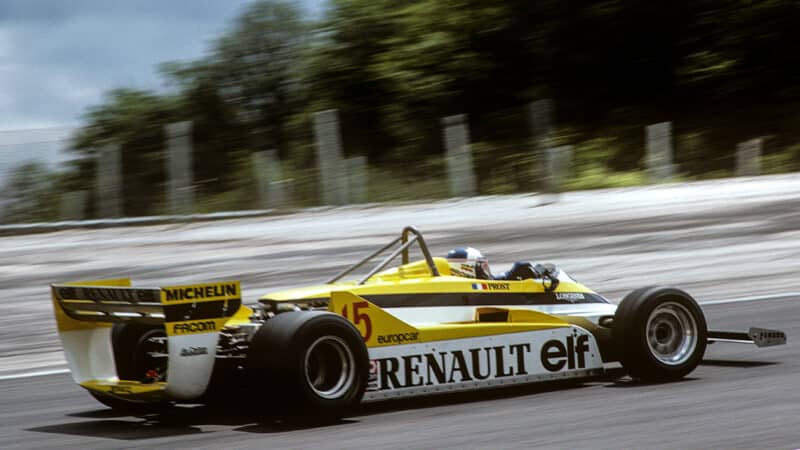
Prost won with pacy RE30 in 1981 French GP, but never had a Renault consistent enough for the title
Bernard Cahier/Getty Images
While Prost moved on to a highly successful stint at McLaren, Derek Warwick was brought in as a replacement for ’84 and ’85.
“There were some super people there in ’84, hard-nosed racing pros,” Warwick told Motor Sport. “But at the year’s end we lost most of them and they were replaced by people from the production car company who had no knowledge of racing. The ’85 car was diabolical, the whole thing turned to shit.”
Renault pulled out as an F1 constructor at the end of the year.
1985 onwards as an engine constructor
Lotus had taken on Renault as an engine supplier from 1983, with the partnership’s first wins coming in 1985 just when the French firm’s works team started to go south.
New recruit Ayrton Senna produced one of the greatest F1 drives of all time at Estoril in just his second Lotus race before adding another at Spa, while team-mate Elio de Angelis clinched victory at Imola after Prost’s disqualification.
Senna would win more races in a Renault-powered Lotus in 1986, but then the manufacturer, which was also supplying Ligier and Tyrrell at this time, decided to call a day on its F1 involvement at the end of 1986.
1990s: Renault returns with naturally-aspirated F1 engines
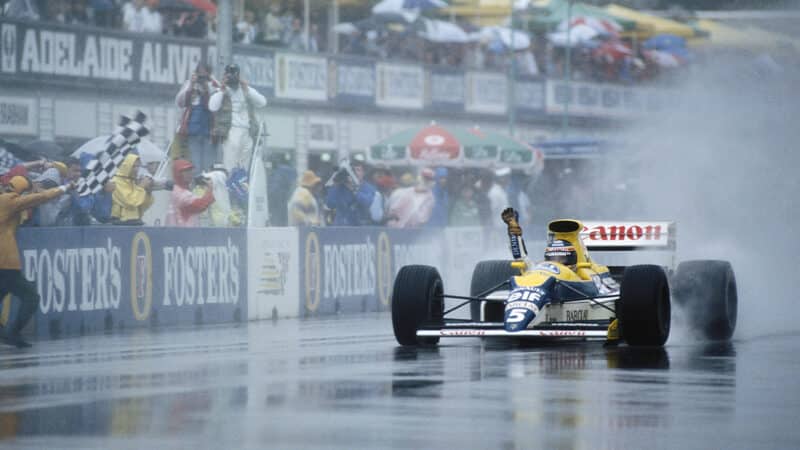
Boutsen wins in Adelaide, 1989
Pascal Rondeau/Allsport/Getty Images
When the turbo-charged engines Renault helped usher in were then phased out, the French firm ironically teamed up with Williams from 1989 onwards and produced a naturally-aspirated offering.
Again it thought differently about F1’s perennial performance questions. While other engine builders went for V8 (Ford, Judd and Yamaha), V10 (Honda), or V12 (Ferrari and Lamborghini) engines, Renault came up with the first pneumatic-valved 3.5-litre V10 engine, the RS1.
